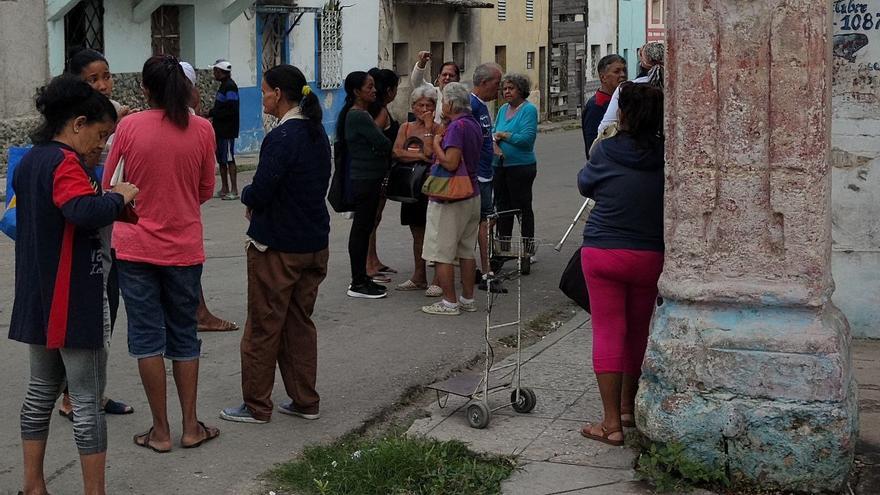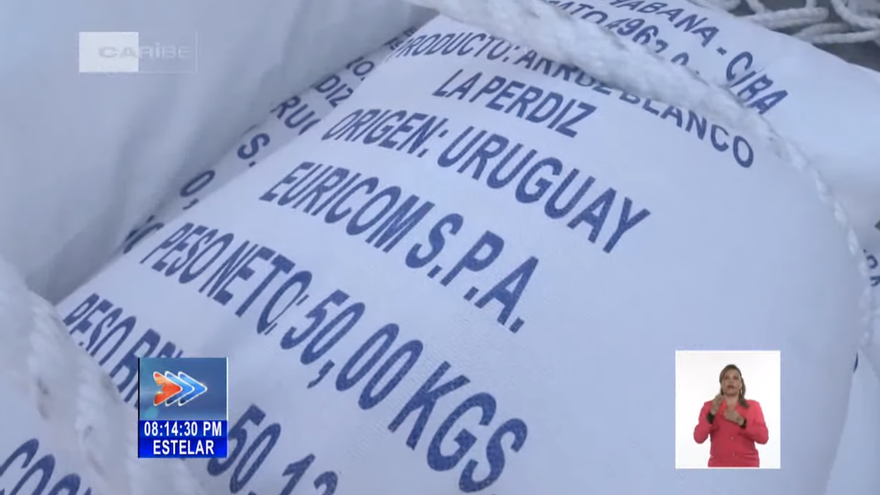
![]() 14ymedio, Juan Diego Rodriguez, 11 December 2023 — It’s Monday and, on the streets of Havana, no one is talking about anything but rice. An article in Cubadebate, a digital state-run news platform, announced that 25,000 tons (more than half a million fifty-kilogram bags) had been offloaded at the Guillermón Moncada port in Santiago de Cuba. The news was met with predictable eagerness despite the fact that Cubadebate reported the rice will not be available in stores for another two weeks.
14ymedio, Juan Diego Rodriguez, 11 December 2023 — It’s Monday and, on the streets of Havana, no one is talking about anything but rice. An article in Cubadebate, a digital state-run news platform, announced that 25,000 tons (more than half a million fifty-kilogram bags) had been offloaded at the Guillermón Moncada port in Santiago de Cuba. The news was met with predictable eagerness despite the fact that Cubadebate reported the rice will not be available in stores for another two weeks.
Cuban broadcaster Canal Caribe also provided images of the delivery. It reported that distribution of the cargo, which will first be shipped to the five eastern provinces, “is also guaranteed for the rest of the country.” The label printed on the bags indicates the rice originated in Uruguay, from where the Eco Bushfire — a cargo ship registered in the Marshall Islands — set sail as 14ymedio was able to confirm through maritime geolocation logs.
With nearly half the month of December gone, many of the country’s bodegas (ration stores) have yet to receive their regular deliveries of rice, a basic staple of the Cuban diet.
Some of those that did manage to get it, like establishments in Havana’s Nuevo Vedado district, were open for business on Sunday, an indication of the level of consumer desperation. Of the list of rationed goods to which Cubans are theoretically entitled, rice is the most in-demand product. Delivery delays have been especially hard on families who cannot afford to pay free-market prices — more than 170 pesos in some places — for a pound of rice.

Customers at the ration store on Perez Street in Havana’s Luyanó district were in luck; the much sought-after staple had been delivered. Hunger and sadness were palpable in the lost looks of people waiting in line. However, many of them changed their minds once they saw the poor quality of this rice of unknown origin was, a far cry from the rice that Santiago de Cuba got. “It’s the kind they call ‘Indian’. It’s steamed, yellowish and doesn’t taste good,” complained a forty-something woman who was also upset because she was allowed to buy only three pounds per person instead of the usual seven pounds.
Those who cannot afford to buy unrationed goods find themselves in a critical situation in spite of the government’s efforts to calm the public mood. Last month, for example, the deputy minister of Domestic Commerce, Yosvani Pupo, appeared on national television to reassure viewers that end-of-year basic staples would, in fact, be available. At that point, it was already past November 15 and, like this month, rice deliveries were delayed.
Domestic production, as some provincial news outlets have indicated, is not and will not be enough to meet consumer demand anytime soon. With hopes pinned on exports, Cubans salivate at the sight of every cargo ship, like the one that arrived on Sunday.
____________
COLLABORATE WITH OUR WORK: The 14ymedio team is committed to practicing serious journalism that reflects Cuba’s reality in all its depth. Thank you for joining us on this long journey. We invite you to continue supporting us by becoming a member of 14ymedio now. Together we can continue transforming journalism in Cuba.
